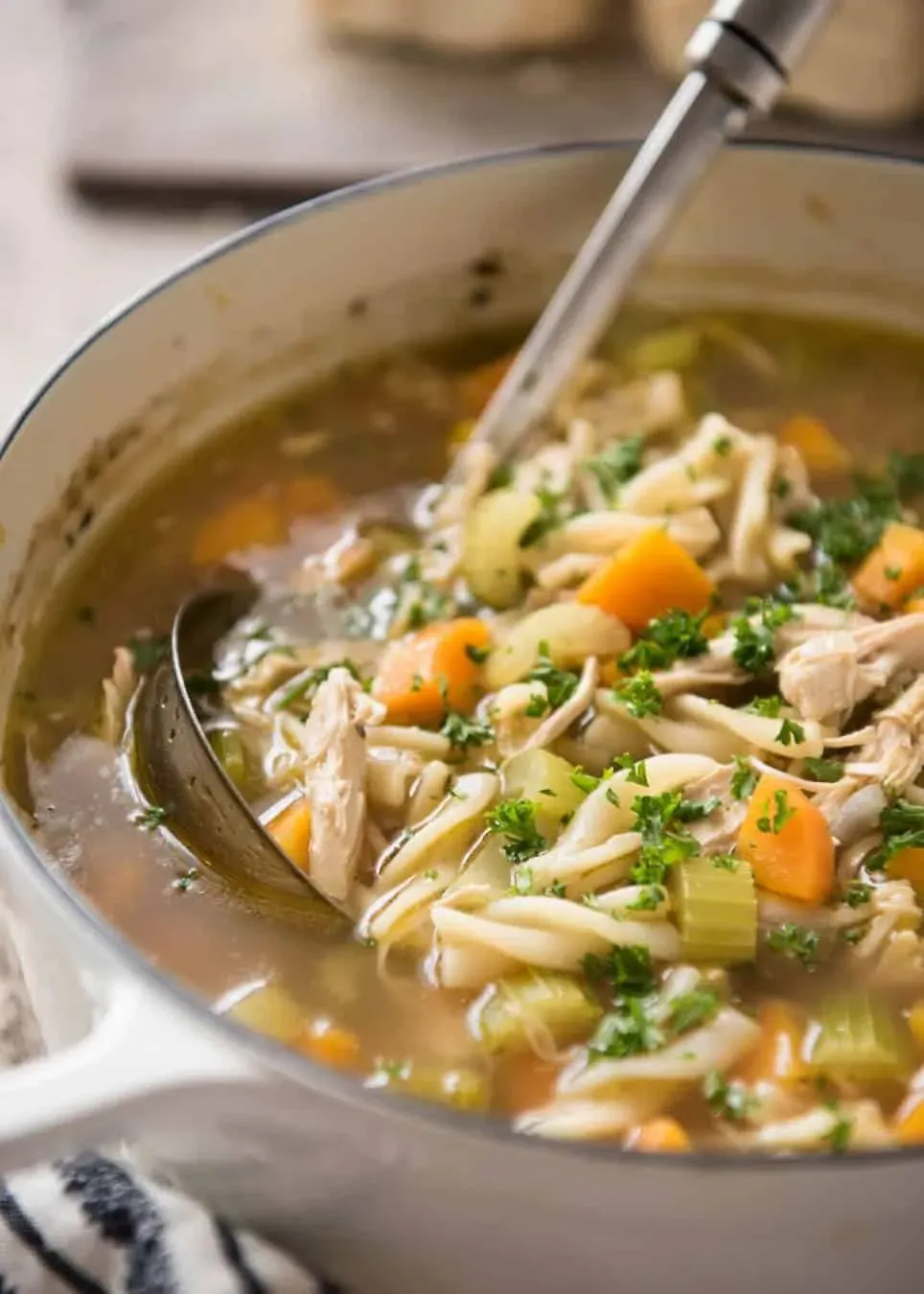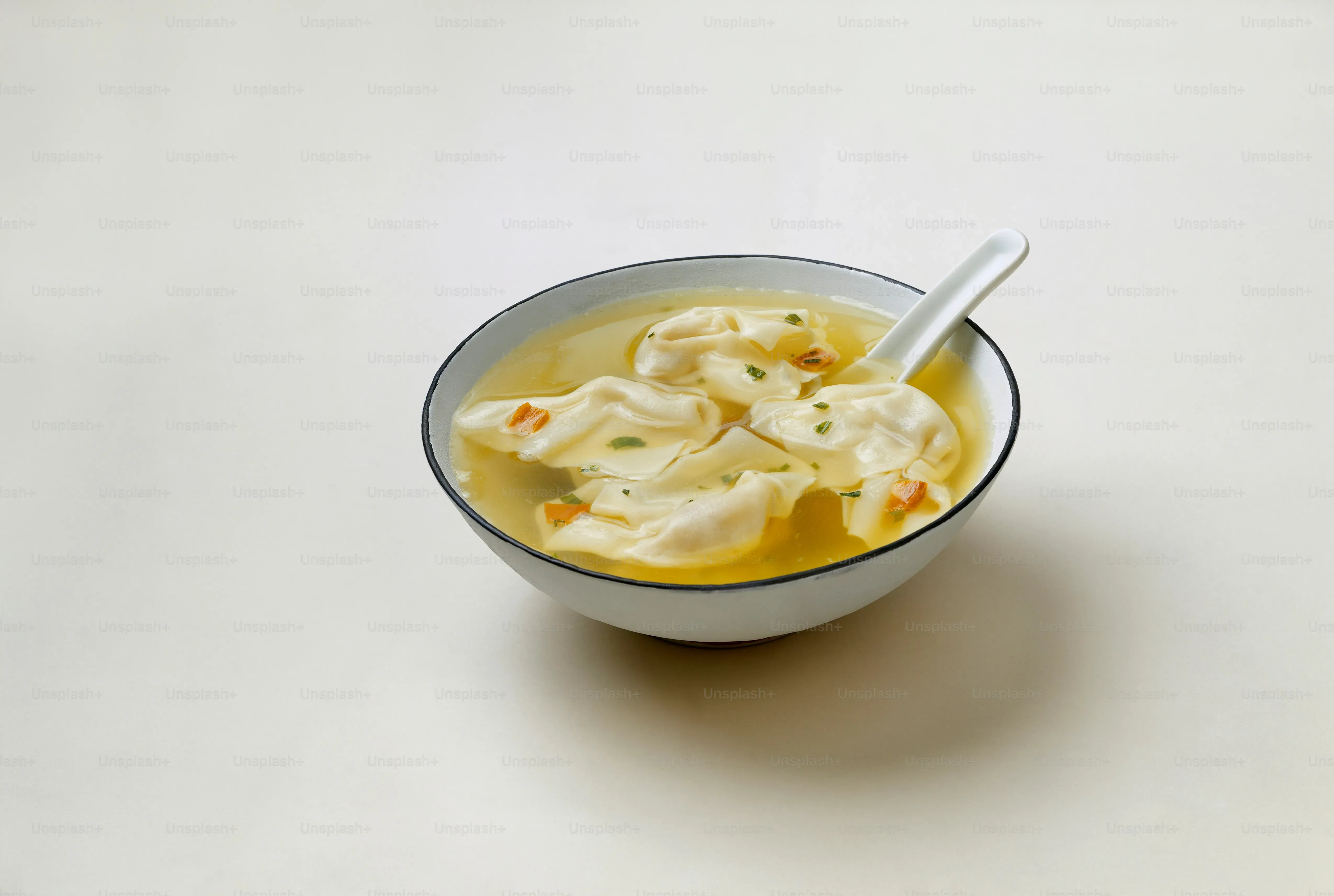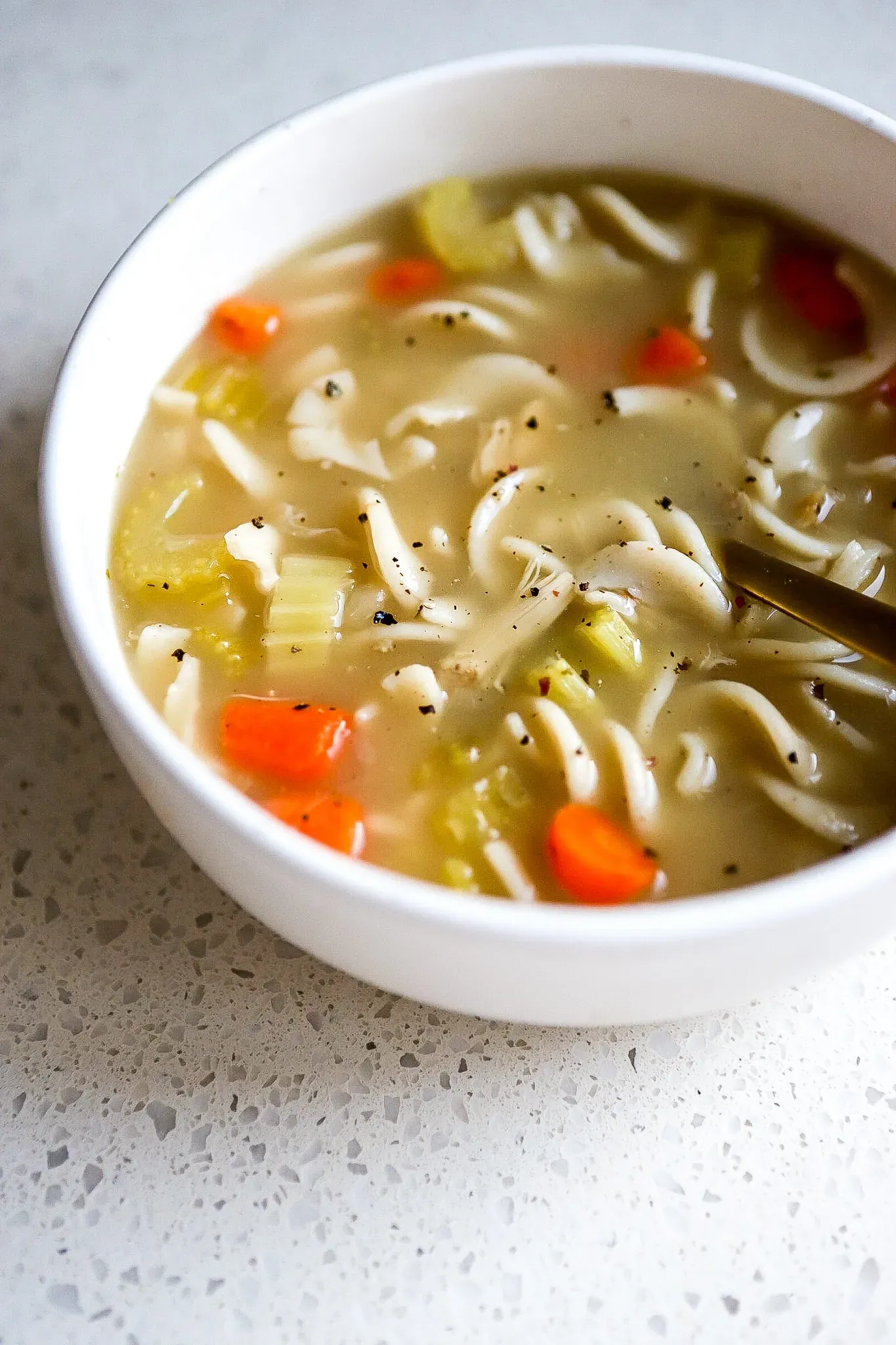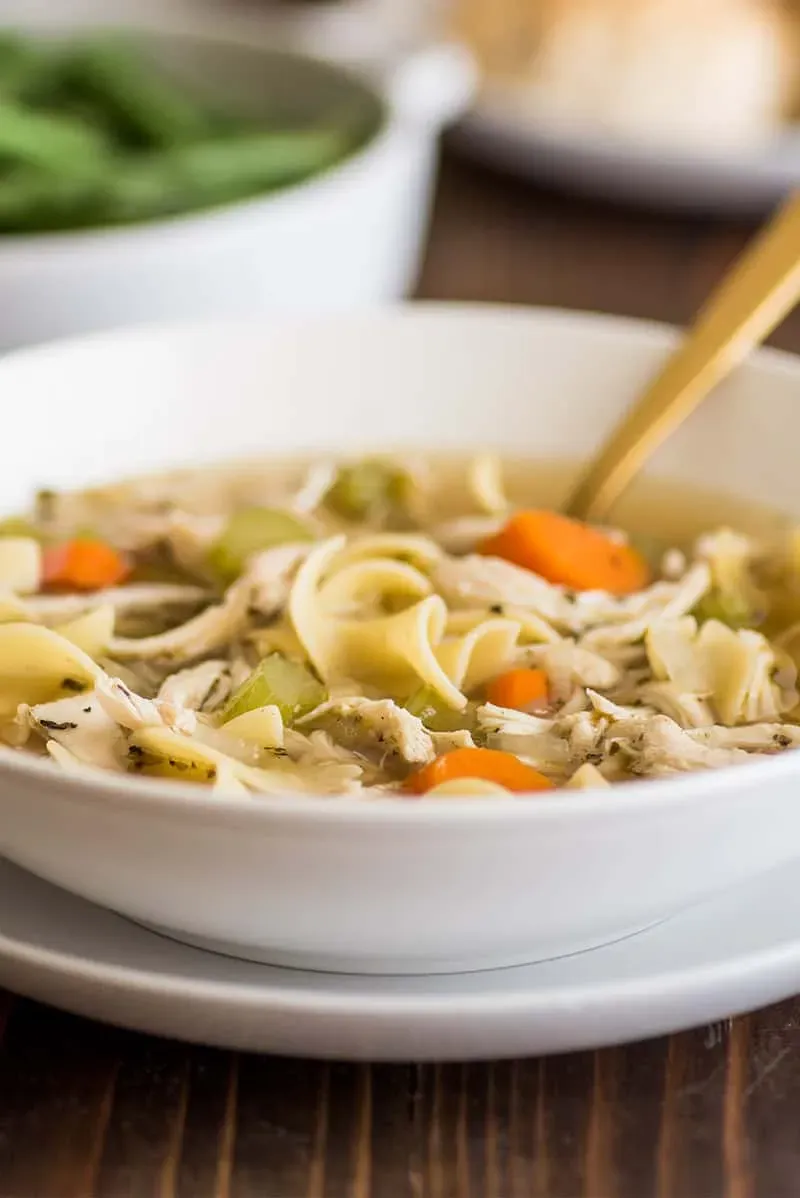Table of Contents
Introduction
Got a leftover chicken carcass staring back at you from the fridge? Don't toss it. That bony structure is pure gold, packed with flavor just waiting to be coaxed out. Most people think making soup from scratch is some kind of culinary Mount Everest, requiring hours and secret techniques. Not so. Especially when you're aiming for a comforting bowl of chicken noodle soup. This isn't just about using up scraps; it's about building a depth of flavor you simply can't get from a carton of store-bought broth. Forget those watery versions you grab when you're feeling under the weather. We're talking about a rich, soul-warming bowl that actually tastes like chicken. This guide walks you through a straightforward chicken noodle soup recipe using a chicken carcass, turning what might be considered waste into a meal that feels like a warm hug. Get ready to transform that leftover bird into liquid comfort.
Why Your Chicken Noodle Soup Needs a Chicken Carcass

Why Your Chicken Noodle Soup Needs a Chicken Carcass
Flavor Depth You Can't Fake
Look, you *could* make chicken noodle soup with just store-bought broth and cooked chicken. Plenty of folks do. But let's be honest, it tastes... fine. It lacks soul. The real magic, the kind that makes you sigh with contentment on a cold day, comes from simmering bones. A chicken carcass, especially one leftover from a roast or rotisserie chicken, is loaded with connective tissue, marrow, and tiny bits of meat that dissolve slowly, releasing gelatin and deep savory flavors. This process creates a stock that's rich, nuanced, and has a body that coats your tongue. It's the difference between a flat photograph and a vibrant, 3D experience. Using that carcass isn't just being frugal; it's a fundamental step in building authentic flavor that a bouillon cube or carton can't replicate.
More Than Just Bones: Nutrition and Value
Beyond the incredible flavor, using a chicken carcass gives you a nutritional boost you'd miss otherwise. As the bones simmer, they release minerals like calcium, magnesium, and phosphorus into the stock. The gelatin, derived from collagen, is often touted for potential joint and gut health benefits. While the science isn't always settled on every claim, adding more nutrient-dense ingredients seems like a no-brainer. Plus, let's talk economics. You already paid for that chicken. Getting a second meal, a truly fantastic meal, out of what many people discard? That's smart cooking. It feels good to minimize waste while maximizing flavor and getting something genuinely nourishing out of it. That's why your chicken noodle soup needs a chicken carcass. What exactly are you missing by skipping the carcass?
- Deep, complex savory flavor
- Richness and body from gelatin
- Released minerals like calcium
- Utilizing a valuable leftover
- The satisfaction of making truly homemade stock
Gathering What You Need for This Chicken Noodle Soup Recipe Using Chicken Carcass

Gathering What You Need for This Chicken Noodle Soup Recipe Using Chicken Carcass
Starting with the Star: That Leftover Carcass
Alright, so you've got your roasted chicken carcass. Maybe you picked off most of the meat for tacos or sandwiches. Perfect. That's exactly what you need for this chicken noodle soup recipe using chicken carcass. One carcass from an average 3-4 pound bird is plenty. Don't worry about getting every last shred of meat off; those little bits will add flavor. If you've got two smaller carcasses, even better. This is the foundation, the absolute non-negotiable ingredient that separates this soup from the bland stuff. Think of it as your flavor starter pack.
Building the Flavor Base: Aromatics for Stock
Beyond the carcass, you need some classic soup veggies to build that aromatic base for your stock. We're talking carrots, celery, and onion. These are the unsung heroes of broth-making, adding sweetness, depth, and a clean vegetable flavor that complements the chicken beautifully. You don't need to be fancy with the chopping for this part; big chunks are fine since you'll be straining them out later. Think rough chop – just get them into the pot. A bay leaf or two and a few sprigs of fresh parsley stems (the parts you usually toss!) are also excellent additions if you have them, adding subtle herbal notes. Here's your basic stock building crew:
- Chicken carcass (1 from a medium bird)
- 1-2 carrots, roughly chopped
- 1-2 celery stalks, roughly chopped
- 1 medium onion, quartered
- Optional: Bay leaves, parsley stems
Finishing Touches: Veggies, Noodles, and More Chicken
Once your stock is made, you'll need another round of vegetables for the actual soup – this time diced smaller so they're nice to eat. More carrots and celery are standard, maybe some peas or corn if you like. You'll also need noodles. Egg noodles are classic for chicken noodle soup, but feel free to use whatever pasta shape you prefer – ditalini, elbow macaroni, or even broken spaghetti work. And finally, you'll need some cooked chicken meat to add to the soup. This is where any leftover meat you picked off the carcass comes in handy. If you don't have enough, a cooked chicken breast or thigh works just fine, shredded or diced.
Crafting the Rich Stock: The Heart of Your Chicken Noodle Soup

Crafting the Rich Stock: The Heart of Your Chicken Noodle Soup
Simmering Your Way to Flavor
This is where the magic happens, where that collection of bones and veggie scraps transforms into liquid gold for your chicken noodle soup recipe using chicken carcass. Grab your largest pot, the one you usually use for boiling pasta for a crowd. Toss in that chicken carcass, or carcasses if you have them. Add your roughly chopped carrots, celery, and onion. If you have bay leaves or parsley stems, throw those in too; they add subtle background notes. Now, cover everything with cold water by about an inch or two. Don't use hot water; cold water helps extract more flavor and impurities slowly as the temperature rises. Bring it to a gentle simmer over medium heat. You'll see some foamy stuff rise to the top; that's impurities. Skim it off with a spoon and discard it. Once it's simmering gently, reduce the heat to low, cover partially, and let it bubble away for at least 1 to 2 hours. The longer it simmers, the richer the stock will be, but don't feel like you need to tend to it constantly after the initial skimming. What's happening in that pot?
- Collagen from bones turns into gelatin, adding body.
- Minerals from bones dissolve into the water.
- Aromatics release their flavors, infusing the liquid.
- That leftover carcass is giving you its absolute best.
Turning Stock into Comfort: Finishing Your Chicken Noodle Soup Using Chicken Carcass

Turning Stock into Comfort: Finishing Your Chicken Noodle Soup Using Chicken Carcass
From Bones to Broth: Straining the Liquid Gold
Your pot has been simmering, doing its quiet work of extracting all that good stuff from the chicken carcass and vegetables. The kitchen should smell amazing right about now. It's time to ditch the solids and keep the liquid. Place a fine-mesh sieve or a colander lined with cheesecloth over another large pot or a heatproof bowl. Carefully pour the contents of your simmering pot through the sieve. Let it drain completely. You'll be left with a beautiful, clear (or slightly cloudy, which is fine) chicken stock. Discard the solids – the spent bones and mushy vegetables have given their all. This is the flavorful foundation for your chicken noodle soup recipe using chicken carcass. Taste the stock. Does it need salt? Probably. Add a pinch or two, but remember you'll add more flavor components later.
Building the Bowl: Adding the Goodies
Now that you have your incredible homemade stock, it's time to turn it into soup. Pour the strained stock back into a clean pot. Bring it to a simmer over medium heat. Add the fresh, diced vegetables you prepared – think carrots and celery cut into nice, bite-sized pieces. Let them cook for about 5-7 minutes, or until they start to soften but are still a bit crisp. Next comes the noodles. Drop them in and cook according to package directions, usually just a few minutes for egg noodles. Don't overcook them unless you enjoy mushy pasta (some people do, no judgment). Finally, add the cooked chicken meat you set aside earlier. Since it's already cooked, you just need to heat it through, which takes a minute or two. Here's what you're adding to your strained stock:
- Fresh diced carrots
- Fresh diced celery
- Noodles (egg noodles are classic)
- Cooked chicken meat (shredded or diced)
- Salt and pepper to taste
Tweaks, Storage, and Enjoying Your Homemade Chicken Carcass Soup

Tweaks, Storage, and Enjoying Your Homemade Chicken Carcass Soup
Making It Your Own: Tweaks and Additions
you've got the fundamental chicken noodle soup recipe using chicken carcass down. You've transformed bones into a rich broth, added your veggies and noodles, and have a pot of soup simmering. But maybe you want to put your own stamp on it. This isn't some rigid culinary law; think of it as a starting point. Want a little kick? A pinch of red pepper flakes added with the vegetables does the trick. Feeling under the weather? A knob of fresh ginger, sliced thin and simmered with the stock, adds a warming zing. Fresh herbs stirred in at the very end make a noticeable difference. Think chopped fresh parsley, dill, or even a bit of chives. A squeeze of lemon juice right before serving brightens everything up. Don't be afraid to experiment slightly. Want to jazz things up? Try adding:
- Minced garlic (sauteed briefly before adding stock)
- Fresh ginger slices (simmered with the carcass)
- A splash of soy sauce or fish sauce for umami
- Greens like spinach or kale (stir in at the end until wilted)
- Different noodle shapes (or swap noodles for rice)
- Frozen peas or corn (add in the last few minutes of cooking)
- A bay leaf (if you didn't add one to the stock)
Soup Longevity: Storing Your Hard Work
So, you've got more of this glorious chicken noodle soup using chicken carcass than you can eat in one sitting. Good. Leftovers are one of the perks of cooking. Let the soup cool down completely before you even think about putting it in the fridge or freezer. Sticking a hot pot directly into a cold environment is asking for trouble (for both the soup and your appliance). Once cool, ladle it into airtight containers. It'll keep in the refrigerator for about 3 to 4 days. If you won't finish it by then, the freezer is your friend. It freezes beautifully for up to 3 months. A quick word of caution: noodles, especially egg noodles, can get a bit mushy and expand when stored, particularly after freezing and reheating. If you plan to freeze a large batch, consider cooking the noodles separately and adding them to individual bowls just before serving, or adding slightly undercooked noodles to the soup right before freezing. This helps maintain their texture better upon reheating.
The Payoff: Serving and Simple Joys
Alright, the main event. Ladling that steaming, fragrant chicken noodle soup into a bowl. This isn't gourmet dining; it's comfort food at its finest. Serve it hot. A little extra black pepper on top is never a bad idea. A crusty piece of bread for dunking is practically mandatory. This chicken noodle soup recipe using chicken carcass delivers a depth of flavor that feels both familiar and deeply satisfying. It's the kind of meal that makes you slow down, take a deep breath, and appreciate simple, good food. It might not cure all your ailments, despite what pop culture tells you, but it definitely makes a rough day feel a little less rough. Enjoy the fruits of your labor.
The Final Spoonful: Why That Carcass Matters
So there you have it. That humble chicken carcass, often destined for the bin, is the secret weapon for a truly flavorful chicken noodle soup. It’s not about being fancy; it’s about extracting every last bit of goodness. You took something overlooked and turned it into a steaming bowl of comfort. It's a practical move that happens to taste pretty damn good. Enjoy the soup; you earned it by not letting good bones go to waste.
